Photos: 5,000-Year-Old Hieroglyphs Discovered in Sinai Desert
Sprawling drawings and hieroglyphics were carved into stone in the Sinai Desert more than 5,000 years ago, possibly by mining expeditions sent out by early Egyptian pharaohs, say the archaeologists who discovered them. Here's a look at the artwork found at a site in the desert called Wadi Ameyra. [Read the full story on the Wadi Ameyra hieroglyphics]
Evidence of ancient quarries
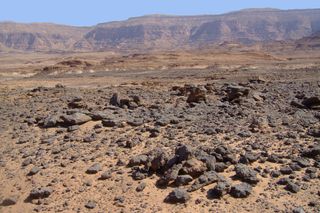
In 2012 archaeologists discovered that a site at Wadi Ameyra, pictured here, has about 60 drawings and inscriptions carved by mining expeditions sent out by the early pharaohs of Egypt. They date back around 5,000 years. Wadi Ameyra is in Egypt's Sinai Desert. The finds were reported recently in the book "La zone minière pharaonique du Sud-Sinaï II" (Institut français d'archéologie orientale, 2015). (Photo courtesy Pierre Tallet)
Primitive culture
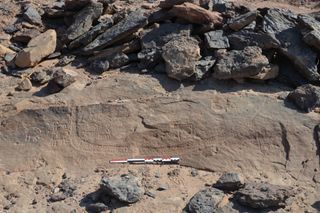
The carvings seen here date back around 5,200 years and are the oldest found at Wadi Ameyra. An image of a boat along with an assortment of animals can be readily seen. (Photo courtesy Pierre Tallet)
Help to see
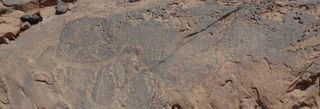
This photo shows carvings left by a mining expedition sent by pharaoh Iry-Hor. From the photo alone it can be difficult to see the different carvings. Archaeologists carefully drew the carvings providing details that photographs don't necessarily capture. (Photo courtesy D. Laisney)
Sign up for the Live Science daily newsletter now
Get the world’s most fascinating discoveries delivered straight to your inbox.
Mentions of early civilizations
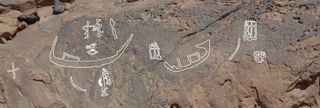
The results of the drawings can be seen here. In this image the drawings are shown along with the photograph providing a clearer view as to what the carvings show. An image of two boats can be readily seen. The inscriptions in this carving represent an early pharaoh named "Iry-Hor" and refer to "the White Walls" a name for Memphis, an ancient capital of Egypt. (Photo and drawings courtesy D. Laisney)
A time-worn image

The carvings seen here were left by a mining expedition sent out by Narmer, a pharaoh of Egypt who reigned two generations after Iry-Hor. Several boats can be seen including once which contains a royal serekh, which shows a falcon standing on a façade that looks like a palace. Researchers note that the serekh looks like a cabin on the boat. (Photo and drawings courtesy D. Laisney)
Vivid justice
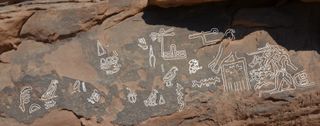
The carvings seen here were left by a mining expedition sent out by the pharaoh "Djer" who reigned about 5,000 years ago. At right there is a scene of people being clubbed to death. (Photo and drawings courtesy D. Laisney)
Ancient female monarch
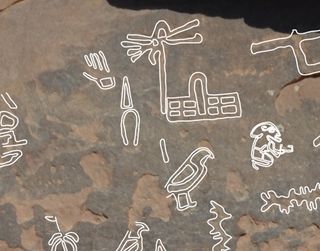
The hieroglyphic symbol at top, showing what looks like a rod with many arms beside a building, is the name for a queen called "Neith-Hotep." Analysis of the inscriptions revealed that she was a regent queen who ruled Egypt when Djer was young. She would have ruled Egypt, as a regent, millennia before Hatshepsut or Cleopatra VII did. (Photo and drawings courtesy D. Laisney)
Graphic ruling
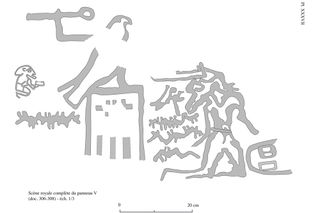
A drawing showing the massacre scene. It shows a royal serekh, a carving of a falcon standing on what looks like the façade of a palace. In this version of the royal serekh the falcon appears to be holding a club and is striking at people who — researchers say — appear to be from the western delta of the Nile River. (Drawings courtesy D. Laisney)

Owen Jarus is a regular contributor to Live Science who writes about archaeology and humans' past. He has also written for The Independent (UK), The Canadian Press (CP) and The Associated Press (AP), among others. Owen has a bachelor of arts degree from the University of Toronto and a journalism degree from Ryerson University.
Most Popular

